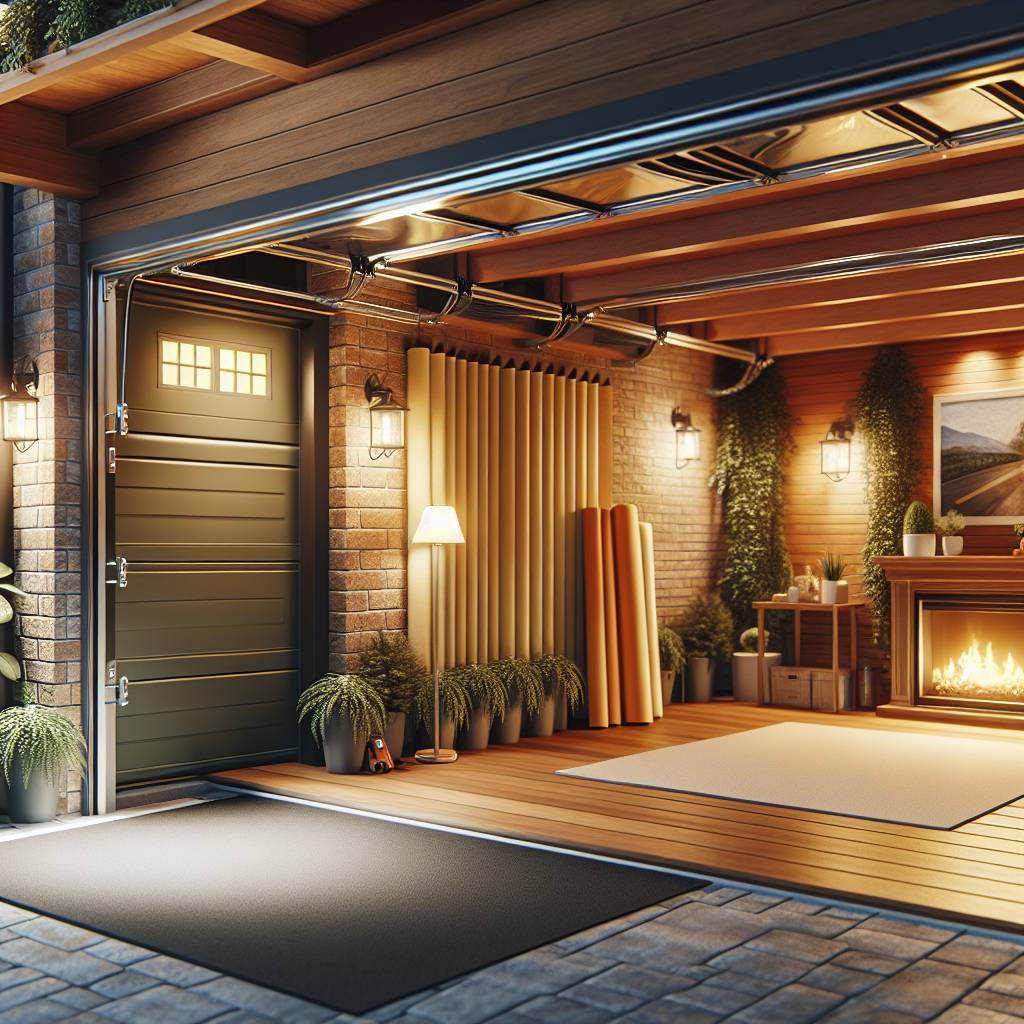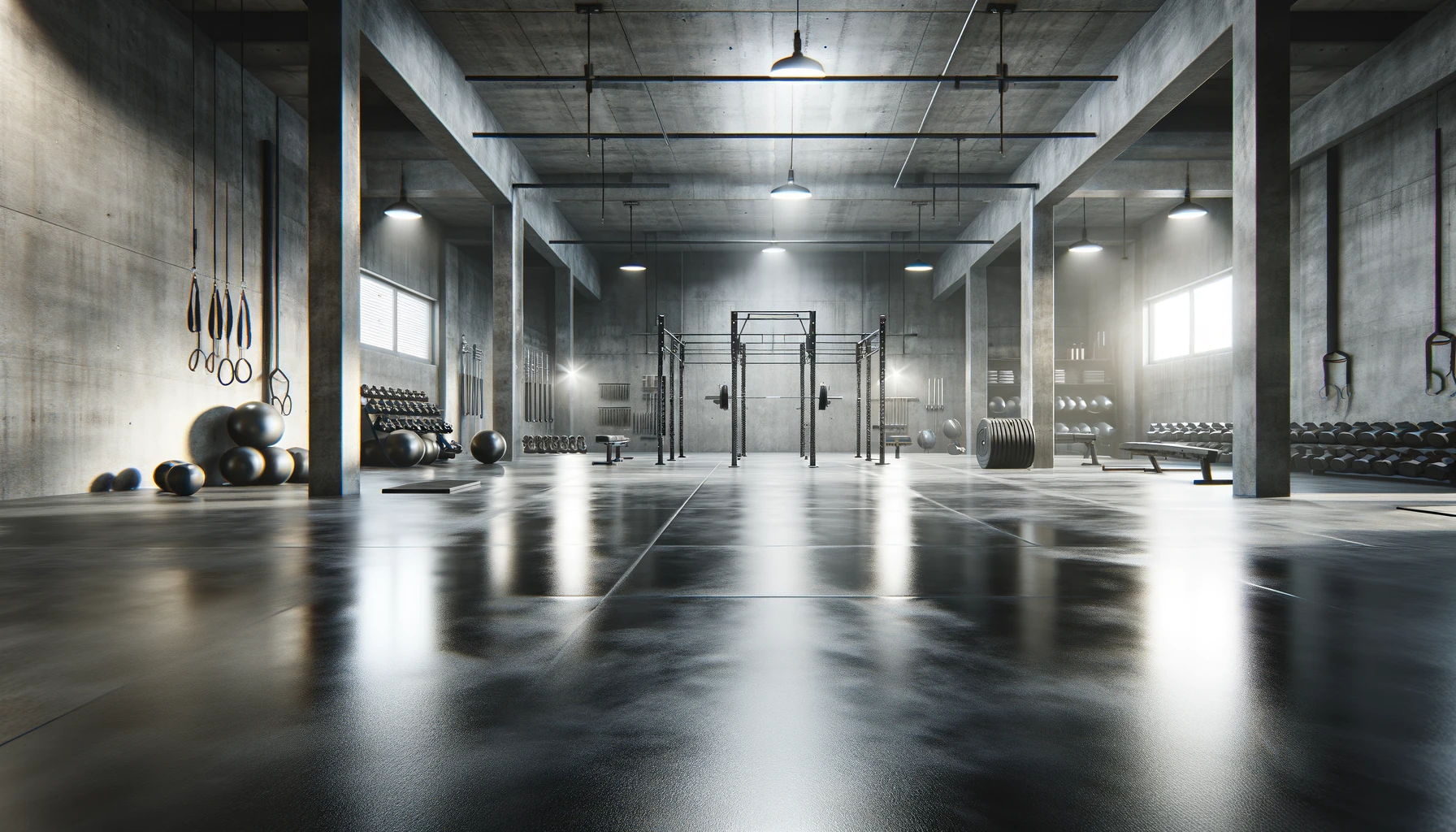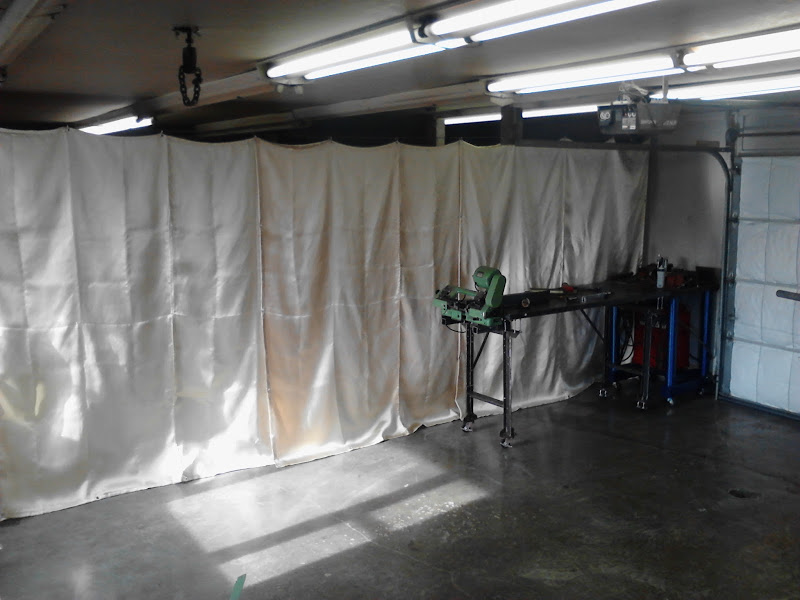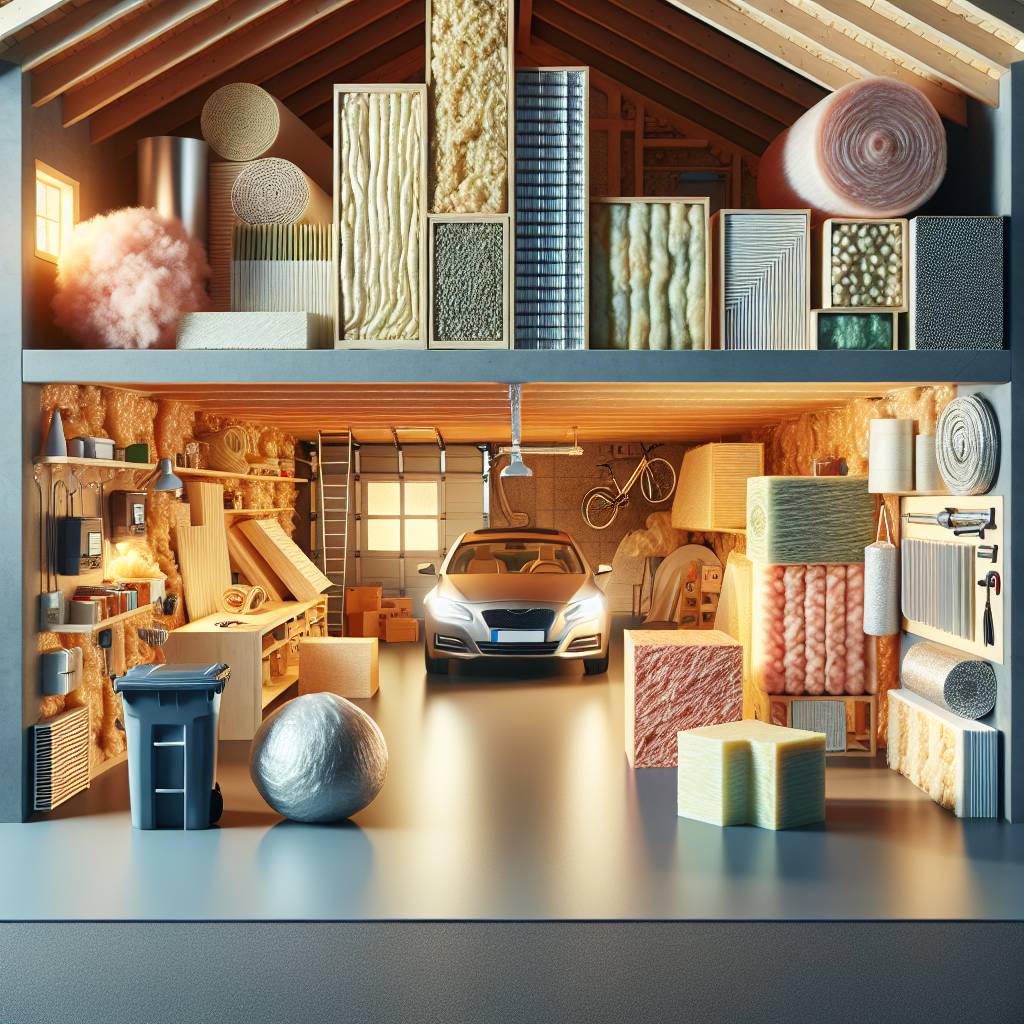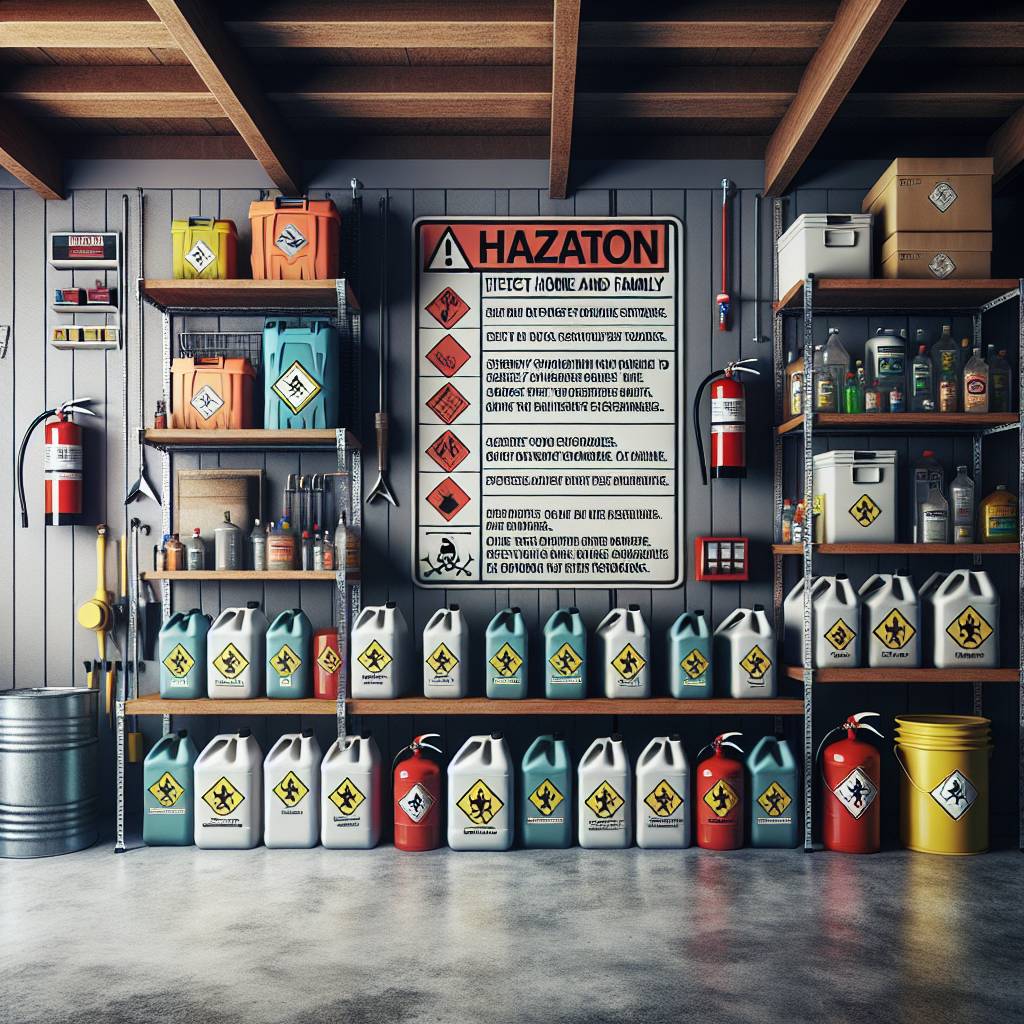When it comes to maintaining a comfortable and energy-efficient home, addressing air leaks in garage walls and ceilings is crucial. By sealing these gaps, you can enhance insulation, reduce energy bills, and create a more comfortable living space. Historically, homeowners have grappled with the challenge of air leaks, leading to increased energy consumption and decreased indoor comfort levels. However, with the right techniques and materials, sealing air leaks in garage walls and ceilings is a manageable task that offers significant benefits. In this guide, we will explore effective methods to seal air leaks, improve energy efficiency, and enhance the overall comfort of your home by using wall insulation.
Key Takeaways
- Identify and understand air leaks: Take the time to locate and comprehend the air leaks in your garage walls and ceilings to effectively seal them.
- Prepare adequately: Before sealing, ensure you prepare the area properly by cleaning and repairing any damaged surfaces to achieve long-lasting results.
- Utilize appropriate sealing techniques: Choose the right sealing technique based on the type of leak and material of your garage for optimal results.
- Implement detailed sealing methods: Employ specific methods like weatherstripping, caulking, or insulation to seal air leaks thoroughly and prevent energy loss.
- Boost energy efficiency: Sealing air leaks in your garage can significantly enhance energy efficiency, leading to cost savings on heating and cooling bills.
- Safeguard indoor air quality: By sealing off garage air leaks, you can prevent pollutants from entering your home, ensuring cleaner indoor air for your family’s health.
- Enjoy the benefits of a sealed garage: A properly sealed garage not only improves energy efficiency but also enhances comfort, reduces noise, and increases the overall value of your property.
- Regular maintenance is key: To maintain the effectiveness of your air sealing efforts, conduct periodic checks and repairs to address any new air leaks that may develop.
Understanding Air Leaks
Importance of Sealing
Sealing air leaks in garage walls and ceilings is crucial for safety. It plays a significant role in preventing the infiltration of harmful contaminants into living spaces by using air sealing walls and an air barrier. Proper sealing is essential for maintaining indoor air quality by keeping pollutants out.
Common Leak Sources:
- Rim joists and foundation wall intersections are common areas prone to air leaks in garages.
- Cracks between boards can also serve as potential sources of air leakage, compromising the overall seal.
- Sealing penetrations through walls and ceilings is vital to prevent leaks and maintain a secure environment.
Impact on Energy Efficiency
Sealing air leaks can result in substantial energy savings by reducing heating and cooling losses. Properly sealed garage walls and ceilings contribute significantly to energy efficiency. By air sealing these wall leaks, homeowners can improve their overall home energy performance.
Effects on Indoor Air Quality:
- Unsealed garage walls and ceilings can compromise indoor air quality by allowing pollutants to enter living spaces.
- Poor air quality due to garage air infiltration poses risks to health and well-being.
- Sealing leaks is essential for creating a healthier indoor environment free from harmful contaminants.
Preparing for Air Sealing
Identifying Leaks
To effectively seal air leaks in garage walls and ceilings, identify potential leakage points by inspecting for cracks, gaps, and openings. Visual cues like peeling paint or dust accumulation can signal air leaks. Thoroughly examine areas where different building materials meet, such as corners and edges to air seal.
Leakage points in garage walls and ceilings can be identified through visual cues such as cracks, gaps, and holes. These areas often show signs of wear and deterioration, indicating potential air leakage. A comprehensive inspection is crucial to locate all possible leaks for airtight sealing.
Tools and Materials
Essential tools like caulk, spray foam, and weatherstripping are necessary for sealing air leaks effectively. Caulk is ideal for filling small gaps, while spray foam expands to seal larger openings. Weatherstripping helps create airtight seals around doors and windows. Using the right tools ensures precise application for optimal results.
- Tools: Caulk, spray foam, weatherstripping
- Materials: Sealants, tapes, insulating foams
When sealing air leaks in garage walls and ceilings, choose appropriate materials such as sealants, tapes, and insulating foams. These materials provide a barrier against air infiltration, enhancing energy efficiency. Proper selection of materials is essential for creating a durable and airtight seal in garage spaces.
Safety Measures
Prioritize safety when sealing air leaks in garages to prevent health hazards and accidents. Follow safety protocols when handling foam sealants and caulk to avoid skin irritation or respiratory issues. Ensure adequate ventilation during air sealing activities to dissipate fumes and maintain indoor air quality.
- Use protective gear (gloves, goggles)
- Work in well-ventilated areas
- Dispose of materials properly
Safety measures play a crucial role in preventing accidents during air sealing projects. Wear protective gear like gloves and goggles to shield against chemical exposure. Adequate ventilation is essential to minimize the risk of inhaling harmful fumes while working on creating an airtight barrier.
Sealing Techniques Overview
Foam Sealants
Foam sealants are highly effective in sealing air leaks in garage walls and ceilings. They provide an airtight seal that prevents heat loss and drafts. The application process is simple: just apply the foam to the gaps, where it expands to fill and seal them. Foam sealants are versatile and can be used on various surfaces, ensuring comprehensive air sealing.
- Pros of Foam Sealants:
- Easy to apply
- Expands to fill gaps effectively
- Provides excellent insulation
- Cons of Foam Sealants:
- Can be messy during application
- Not suitable for large gaps
Caulking
Caulking plays a crucial role in sealing small gaps and cracks in garage walls and ceilings. It is ideal for precise sealing around windows, doors, and baseboards. Applying caulking is straightforward: use a caulking gun to fill the gaps with the material. Caulking provides a durable seal that withstands temperature changes and prevents air leakage.
- Application Process of Caulking:
- Clean the surface
- Cut the tip of the caulk tube
- Apply caulk in a steady motion
- Smooth out with a caulk tool
- Benefits of Caulking:
- Seals small gaps effectively
- Resistant to weather conditions
- Enhances energy efficiency
Weatherstripping
Weatherstripping is essential for sealing gaps around doors and windows in the garage. It consists of flexible materials that create a tight seal when compressed against surfaces. Different types of weatherstripping materials, such as rubber, vinyl, or foam, are available to suit various needs. Weatherstripping is crucial for maintaining a comfortable indoor environment by preventing drafts and heat loss.
- Types of Weatherstripping Materials:
- Rubber
- Vinyl
- Foam
- Importance of Weatherstripping:
- Reduces energy costs
- Improves indoor comfort
- Prevents moisture intrusion
Detailed Sealing Methods
Using Spray Foam
Choosing the Right Type
Selecting the appropriate sealing materials for garage walls and ceilings is crucial. Consider the climate and conditions to determine the most suitable foam sealants, caulking, or weatherstripping. The right type of sealant plays a significant role in ensuring effective air sealing.
Application Tips
For optimal results, follow practical tips when applying sealants in garage walls and ceilings. Different areas require specific techniques to achieve airtight seals. To maintain long-lasting air sealing, adhere to best practices during the application process.
Critical Seal Areas
Rim Joist Focus
Focusing on sealing the rim joist is essential to prevent air leaks effectively. Air leakage through the rim joist can significantly impact energy efficiency. Utilize specific techniques to seal the rim joist efficiently and minimize energy loss.
Enhancing Garage Energy Efficiency
Insulation Integration
Insulation plays a crucial role in enhancing the energy efficiency of garage walls and ceilings. By integrating insulation with air sealing, homeowners can create a more energy-efficient space. Insulation acts as a barrier that helps regulate temperature and reduce heat transfer through walls and ceilings. When combined with air sealing, insulation ensures that conditioned air stays inside the garage, minimizing energy loss.
Effective insulation complements air sealing efforts by filling gaps and crevices that may be missed during the sealing process. It provides an additional layer of protection against heat loss or gain, enhancing the overall energy performance of the garage. By preventing thermal bridging and reducing air infiltration, insulation works hand in hand with air sealing to create a more comfortable and energy-efficient garage environment.
Combining insulation and air sealing is essential for achieving maximum energy efficiency in garage walls and ceilings. While air sealing prevents unwanted drafts and air leaks, insulation helps maintain consistent indoor temperatures by reducing heat transfer. Together, these two elements create a comprehensive solution that not only improves energy efficiency but also enhances overall comfort levels in the garage.
Ventilation Improvements
Ventilation improvements are equally important when addressing air sealing in garage walls and ceilings. Proper ventilation plays a key role in maintaining indoor air quality by ensuring adequate airflow and circulation. When sealing air leaks, it’s crucial to implement ventilation systems that can effectively remove stale air and introduce fresh outdoor air into the garage space.
Ventilation systems work synergistically with air sealing to create a balanced indoor environment. While air sealing helps prevent unwanted drafts and moisture intrusion, ventilation systems ensure that fresh, clean air is circulated throughout the garage. By incorporating ventilation improvements alongside air sealing measures, homeowners can achieve optimal indoor air quality and create a healthier living environment.
Preventing Indoor Air Pollution
Safe Material Use
When sealing air leaks in garage walls and ceilings, it’s crucial to prioritize using safe and non-toxic materials. Certain sealing materials can emit harmful substances, leading to indoor air pollution. Opt for eco-friendly options like low-VOC sealants to ensure a healthier indoor environment.
- Pros: Low-VOC sealants reduce harmful emissions, promoting better indoor air quality.
- Cons: Some eco-friendly options may be more expensive compared to traditional sealing materials.
While improving energy efficiency, consider the potential health risks associated with combustion appliances in garages. Exposure to carbon monoxide from these appliances can pose serious health hazards. Opt for safer materials to prevent such risks.
Maintaining Air Quality
After sealing air leaks, focus on strategies to maintain indoor air quality. Regularly check air quality levels to ensure a healthy living space free from pollutants. Monitoring interior moisture levels is essential to prevent mold growth and maintain optimal air quality.
- Conduct periodic air quality tests to detect any pollutants or contaminants present indoors.
- Install carbon monoxide detectors near combustion appliances to ensure early detection of any leaks.
- Implement proper ventilation systems to promote fresh airflow and reduce the buildup of indoor pollutants.
To prevent future air quality issues related to garage air infiltration, address any remaining leaks promptly. Sealing gaps around doors, windows, and electrical outlets can further enhance indoor air quality and energy efficiency.
Benefits of a Sealed Garage
Energy Savings
Proper air sealing in garage walls and ceilings directly impacts energy savings at home. Sealing air leaks reduces energy consumption, leading to lower utility bills. Investing in air sealing offers long-term financial benefits through enhanced energy efficiency.
Comfort Increase
Sealed garage spaces contribute to enhanced comfort levels within the home. Air sealing ensures better temperature regulation and overall indoor comfort. By creating a sealed environment, homeowners can enjoy a more comfortable living space.
Pollution Reduction
Air sealing plays a crucial role in reducing indoor pollution levels stemming from garage air infiltration. Sealing air leaks effectively prevents pollutants and contaminants from entering living areas. This process significantly contributes to promoting a healthier indoor environment.
Maintenance and Monitoring
Regular Check-ups
Regular inspections are crucial to detect new air leaks in garage walls and ceilings. Conducting these check-ups allows homeowners to identify and address any emerging issues promptly. By proactively monitoring for leaks, individuals can maintain the integrity of their garage’s air sealing, ensuring optimal energy efficiency and indoor air quality.
Periodic maintenance plays a vital role in preserving the effectiveness of air sealing. Ensuring that the garage remains properly sealed helps prevent energy wastage and maintains a comfortable indoor environment. Through regular inspections, homeowners can catch leaks early on and take corrective measures to avoid larger problems down the line.
Frequent check-ups are necessary to sustain continued energy efficiency and indoor air quality. Over time, wear and tear can compromise the garage’s seal, leading to increased energy consumption and potential air pollutants entering the living space. By staying vigilant and addressing any leaks promptly, individuals can enjoy a well-sealed garage that contributes to overall home comfort.
Addressing New Leaks
Promptly addressing any new air leaks that arise in garage walls and ceilings is essential. Taking immediate action upon discovering a leak can prevent further energy loss and maintain indoor air quality. By promptly sealing new leaks, homeowners can uphold the energy efficiency of their property.
Immediate action is crucial to prevent energy wastage and ensure optimal performance of the garage’s air sealing. Ignoring new leaks can result in increased utility bills and decreased comfort levels within the home. By promptly addressing any issues that arise, individuals can protect their investment in maintaining a well-insulated garage space.
Ongoing vigilance is key to maintaining a well-sealed garage space. Regularly checking for new leaks and promptly addressing them helps preserve the integrity of the air sealing system. By staying proactive and attentive to potential leaks, homeowners can enjoy a more energy-efficient and comfortable living environment.
Final Remarks
By sealing air leaks in your garage walls and ceilings, you can significantly enhance your home’s energy efficiency, reduce indoor air pollution, and enjoy a more comfortable living space. Implementing the sealing techniques outlined in this guide will not only save you money on energy bills but also contribute to a healthier environment for you and your family. Regular maintenance and monitoring are essential to ensure the effectiveness of your efforts in sealing air leaks.
Take action today to seal those air leaks in your garage and reap the benefits of a more energy-efficient and healthier home. Your proactive approach to air sealing will not only improve your living conditions but also contribute to a more sustainable future for all. Start implementing these techniques now and make a positive impact on your home and the environment.
Frequently Asked Questions
How do air leaks impact energy efficiency in a garage?
Air leaks in garage walls and ceilings allow conditioned air to escape, leading to increased energy consumption and higher utility bills. Sealing these leaks helps maintain a consistent temperature, reducing energy waste and improving overall energy efficiency.
What are some common signs of air leaks in garage walls and ceilings?
Common signs of air leaks include drafts, uneven temperatures, dust accumulation near walls, and high energy bills. Conducting a simple visual inspection or hiring a professional to perform an energy audit can help identify specific areas where air leaks occur.
What are the benefits of sealing air leaks in garage walls and ceilings?
Sealing air leaks improves energy efficiency, reduces utility costs, enhances indoor comfort, prevents moisture issues, and promotes better indoor air quality. It helps extend the lifespan of HVAC systems by reducing their workload.
How often should garage walls and ceilings be inspected for air leaks?
Regular inspections for air leaks in garage walls and ceilings are recommended at least once a year. However, it’s advisable to inspect after extreme weather events or if you notice any signs of drafts or temperature inconsistencies inside the garage.
Can I seal air leaks in my garage walls and ceilings myself?
While some minor air leak sealing tasks can be DIY-friendly using caulking or weatherstripping, more complex sealing techniques may require professional assistance. Consulting with an energy auditor or a contractor specializing in air sealing can ensure thorough and effective results.
